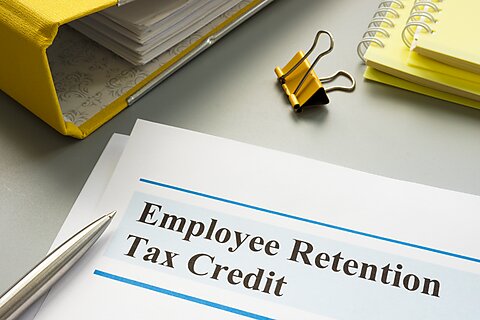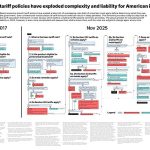
Adam N. Michel
The Employee Retention Tax Credit (ERTC) is a refundable payroll tax credit—equivalent to a cash payment of up to $26,000 per employee—for businesses and nonprofits with significant pandemic‐related revenue declines or shuttered by government orders. The payments were intended to reward companies for keeping employees during the COVID-19 pandemic.
Since passage, the fiscal cost of the credit has ballooned to more than $230 billion, three times the original estimate. Over three‐quarters of that cost is likely a windfall to business owners and tax preparers.
The ERTC was created in the CARES Act and subsequently expanded as part of the 2021 appropriations, expanded again in the American Rescue Plan Act of 2021, and partially clawed back in the Infrastructure Investment and Jobs Act.
Since then, there has been in‐depth reporting, a congressional hearing, and successive IRS guidance highlighting the many problems with the program. In September, the IRS announced it would stop processing new ERTC claims and increase audits following more than a year of repeated warnings to taxpayers against claiming inflated credits. The ERTC was the first entry in the IRS’s annual Dirty Dozen list of tax scams.
In a recent story following the IRS’s crackdown, the Wall Street Journal detailed the rise and fall of third‐party ERTC processing firms that have engaged in extensive marketing campaigns, aggressive (possibly fraudulent) credit claiming, and exploitative contingency arrangements in which some third‐party processors receive up to 25 percent of the credit.
It’s easy to find stories of businesses needing ERTC funds to stay open. These are the stories Congress reacted to when struggling businesses in their districts were waiting on delayed tax refunds.
However, the majority of the ERTC spending looks to have been a windfall to businesses that did not need the funds to retain employees through the pandemic. What doesn’t make the headlines are the thousands of businesses for which the payments are “icing on the cake,” as one accountant put it, “cash they can claim because they qualify,” as opposed to because they needed the cash to retain employees.
The Joint Committee on Taxation initially estimated that the ERTC would cost about $77 billion after the successive legislative changes. Using early filing statistics through the 2021 tax season, a U.S. Treasury economist estimated the credit cost $99 billion (a highly uncertain figure given processing delays). Of that figure, about half of the total credit (about $50 billion) was estimated to come from amended returns—whereby taxpayers claim the credit retroactively after they filed their original return.
As of September 2023, the IRS had paid out more than $230 billion in credits, the steep increase largely due to a flood of amended returns. The Congressional Budget Office pointed to the unexpected surge in credits as one factor for this year’s lower‐than‐expected tax revenues.
The large number of third‐party ERTC processors submitting amended returns is economically damning. For the subsidy to have the intended effect of keeping employees on the payroll who would have otherwise been laid off, the taxpayer must know about the credit and change their behavior during the pandemic closures. There is no employment incentive for taxpayers who submit claims on amended returns upon advice from third‐party consultants years after the pandemic ended.
If the credit did not change behavior, it is simply a windfall.
If we generously assume that all of the JCT’s initially estimated $77 billion went to keep employees on the payroll during the pandemic, we can conclude that the remaining $153 billion of ERTC spending was likely a windfall to business owners and third‐party processors who saw an opportunity to exploit the program’s complexity and lenient rules.
Extrapolating from the other estimate’s $50 billion in claims not submitted on amended returns through the end of the 2021 filling season (and assuming subsequent payments were made to amended returns), as much as $181 billion or 78 percent of the $230 billion in ERTC spending to date has been a windfall to businesses. By one estimate, nearly half of any windfall to business owners is captured by individuals with incomes above $250,000.
Some may argue that the ERTC funds were, in some cases, used for productive ends, such as to pay out employee bonuses or expand businesses to meet post‐pandemic demand. While this is invariably true, it is an argument for lower taxes for all businesses and not just for those who could exploit the arcana of a poorly designed and haphazardly administered tax credit.
Since it created the ERTC, Congress has added dozens of new tax credit schemes worth trillions of dollars to incentivize everything from computer chip manufacturing to hydrogen fuels. We cannot predict how each new credit will unravel, but Congress should expect similar types of grift, fraud, ballooning costs, and other unintended consequences.
The core lesson policymakers should learn from the mistakes of the ERTC is that the tax code and the IRS are not well‐equipped to distribute targeted subsidies. As a matter of economic planning, industrial policy by tax credit is just as economically flawed as industrial policy by any other means. Tax credits for every social and economic ill is a recipe for fiscal ruin and economic malaise.






